Desert Uplands
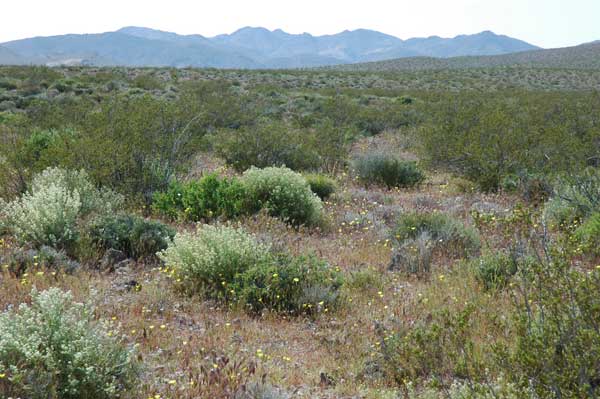
The Oasis Valley is surrounded by Mojave Desert scrub with a rich variety of shrubs such as Creosote (Larrea tridentata), Bursage (Ambrosia dumosa), Nevada Mormon tea (Ephedra nevadensis), Fremont pepperbush (Lepidium fremontii), Wolfberry (Lycium andersonii), and Budsage (Artemisia spinescens). Home to Black-throated sparrows, Sage sparrows, Horned larks, and Prairie falcons. After wet winters some years have spectacular wildflower displays.

Close-up of the delicate purple blooms of Broad-flowered gilia (Gilia cana) in April after a rainy winter.
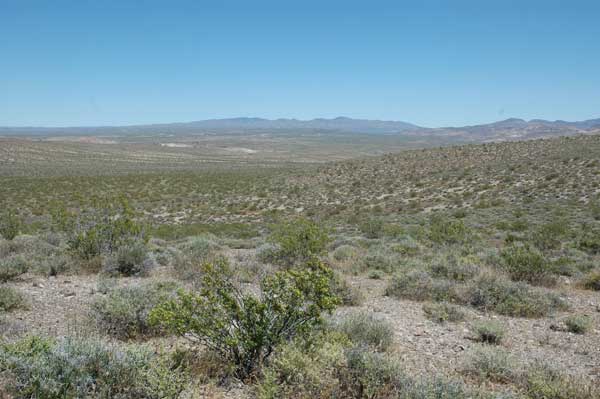
Creosote and bursage hills. Timber Mountain rises in the distance, a Tertiary volcanic plug remnant surrounded by a huge crater that is only visible close to its edge. Oasis Valley geologically is very different from the typical Death Valley area limestone mountains, but is instead formed of ancient rhyolitic rocks formed of ash deposits from the eruption long ago.

Feral burros live in the desert scrub around Beatty. Please close all gates you go through to keep them off the highway and out of preserves.
Transition Shrublands
Areas of saltbrush, rabbitbrush, greasewood, cheesebush, and other shrubs around the edges of Oasis Valley, in washes, fans, and on disturbed ground. They often lie between marshes and desert uplands.

Low saltbush scrub (Atriplex patula) on the edges of the valley, with upland creosote desert beyond.
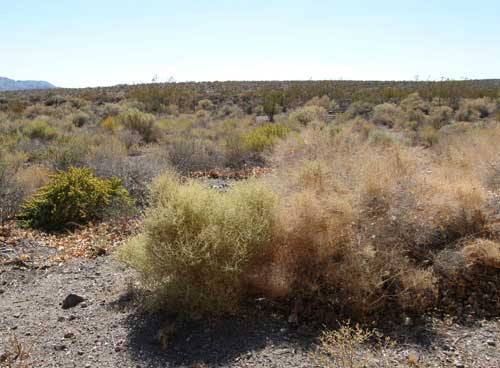
Allscale (Atriplex polycarpa) and Four-wing saltbush (A. canescens) shrubland bewtween the valley and the desert.
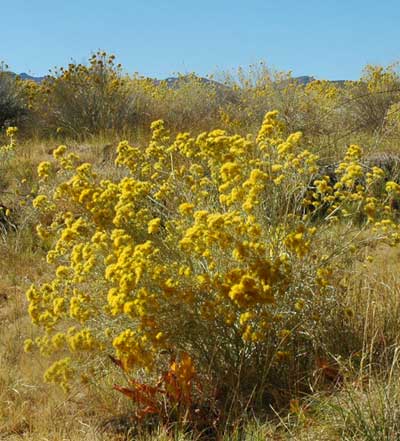
Rubber rabbitbrush (Chrysothamnus nauseosus) blooming in fall.
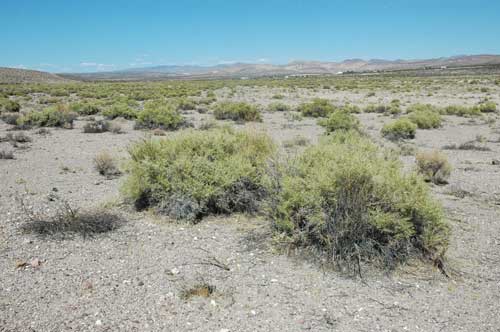
Greasewood (Sarcobatus vermiculatus) flat along the dry river.
Marsh
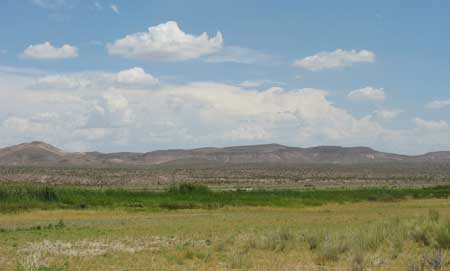
Summer-green ribbons of springfed marsh fill areas of the valley, composed of Threesquare bulrushes (Schoenoplectus pungens), sedges (Eleocharis spp.), rushes (Juncus mexicanus), cattails (Typha spp.), and other plants.
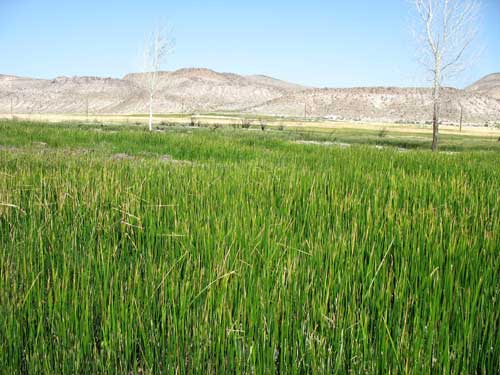
Lush new bulrush marshes emerge after a controlled burn on Torrance Ranch Preserve, organized by The Nature Conservancy. Marsh vegetation is very well adapted to fire, and in the past lightning strikes lit occasional blazes, and Shoshone and Paiute people set fires to improve hunting areas and manage basketry plants.

Goldenrod (Solidago confinis) flowers in August and September in marsh areas.
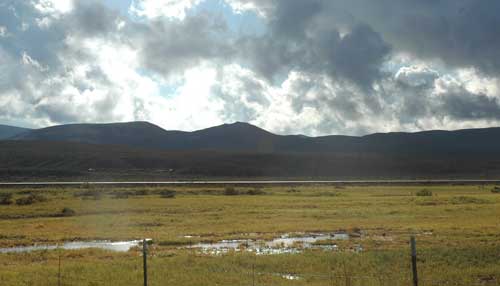
Shallow river water flooding a saltgrass channel. Ibises, Willets, dowitchers, and curlews sometimes visit these habitats in springtime.
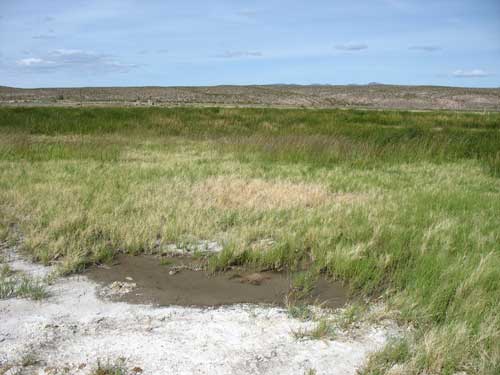
Drying mud as floodwaters recede and springflows seasonally shrink -- ibises feed here.

The marshes dry out in late fall and winter.
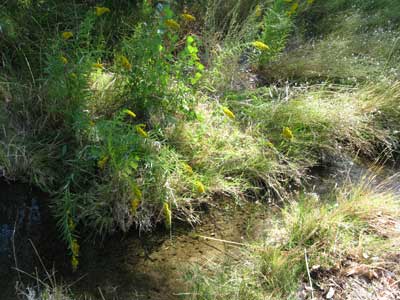
A small spring flows magically out of the ground, creating life along its channel.

Dense, tall forests of tules (Schoenoplectus acutus) create habitat for rails, Marsh wrens, and Common yellowthroats.
Open Water
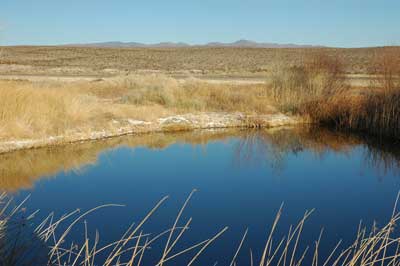
Stockpond on a ranch, surrounded by tules.
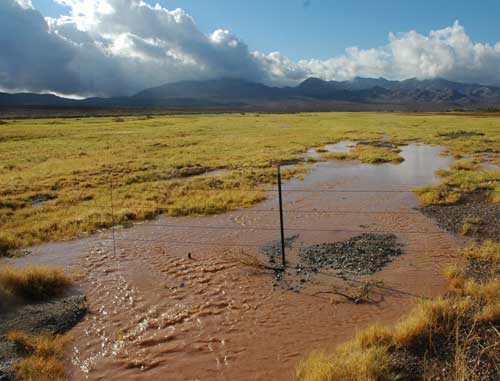
The Amargosa River flowing after a winter storm. Dabbling ducks such as Mallards can often be found in these shallow waters.
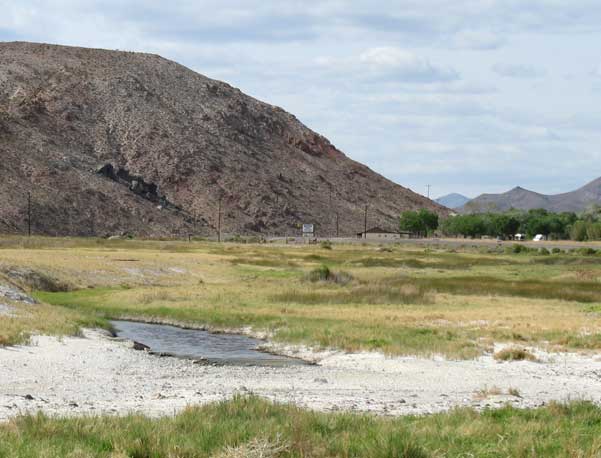
A drying pool in the riverbed remains after the river has stopped flowing aboveground. Deep "potholes" and natural channel ditches hold water for months sometimes, attracting ducks, egrets, and sandpipers.
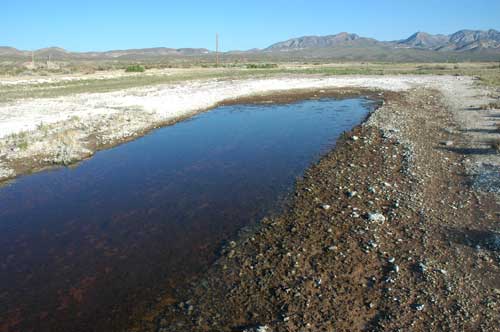
Drying river pool in a pothole in the channel.
Riparian Woodland

Fremont cottonwoods (Populus fremontii) in summer.

Gooding willows (Salix gooddingii) and cottonwoods.

Cottonwoods over a thick sward of Creeping wildrye (Leymus triticoides) and rushes.

Yerba mansa (Anemopsis californica) and bulrush under a thicket of willows and cottonwoods.
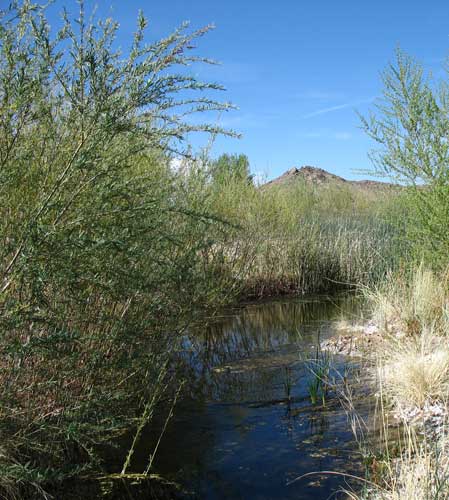
Coyote willows (Salix exigua) form dense thickets of riparian shrubs.
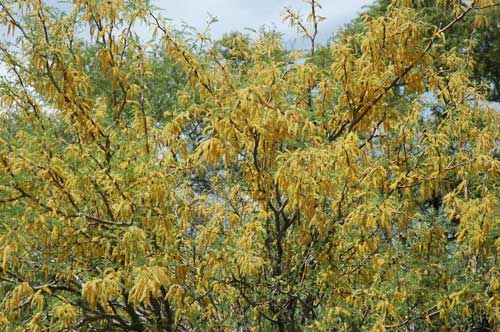
Blooming Honey mesquite (Prosopis glandulosa), growing with cottonwoods and willows fairly commonly.
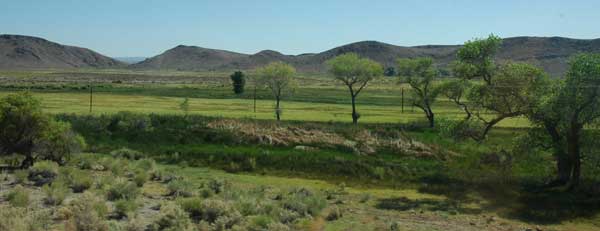
Summer-green spring with scattered cottonwoods and willows in a cattle pasture. Rabbitbrush occupies the lower left foreground.

Winter landscapes in Oasis Valley, with leafless cottonwoods.
Grassland
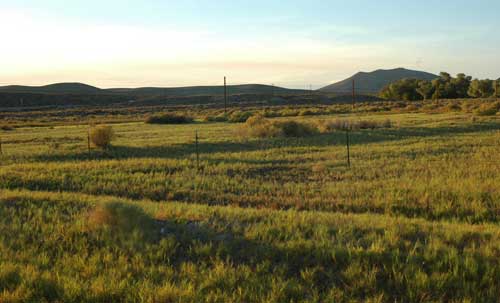
Saltgrass (Distichlis spicata) meadows are common in the valley, including much of the channel of the underground Amargosa River. Torrance Ranch Preserve, above.
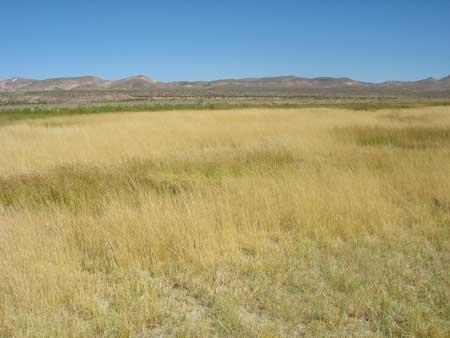
Grasslands of native Nevada bluegrass (Poa secunda ssp. juncifolia) with tall stems dried like hay in late summer. These areas are often shallowly flooded in winter. Meadowlarks and Savannah sparrows favor such habitats.
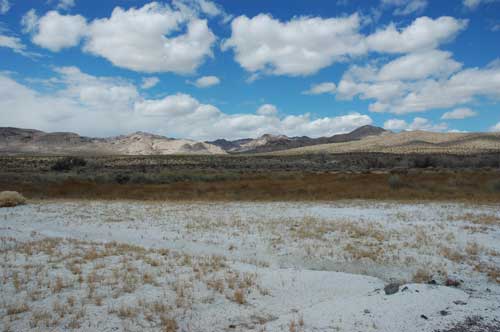
Not snow, but alkaline flats in a saltgrass area.

Green saltgrass meadows in early summer.
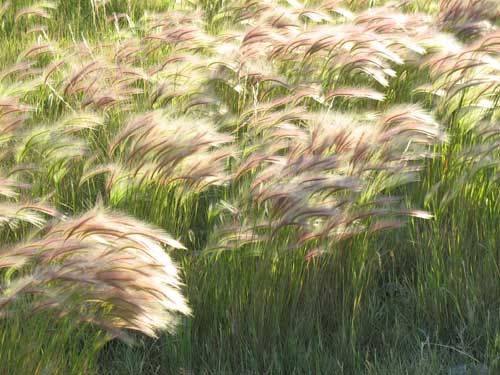
Native Foxtail barley (Hordeum jubatum) in moist river meadows.
Houses and Ranches
Town areas, houses, ranch buildings, gardens, and ornamental trees.
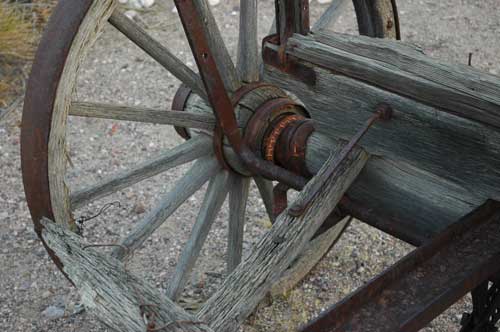
Old wagon from Beatty's ranching and farming history.

Barn with elms. Many shade trees have been planted around residences and working areas in the valley, such as Russian olive, tamarisk, and Chinese tree of Heaven.
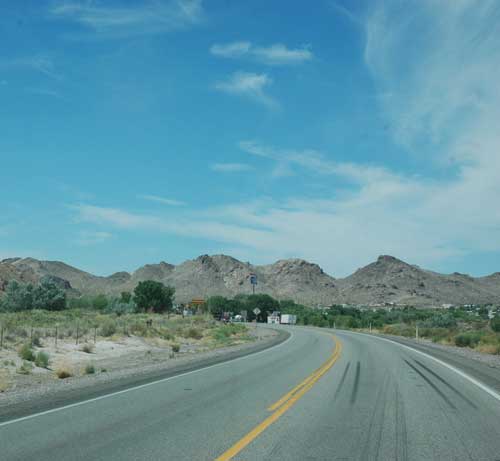
Coming into Beatty on Highway 95.

